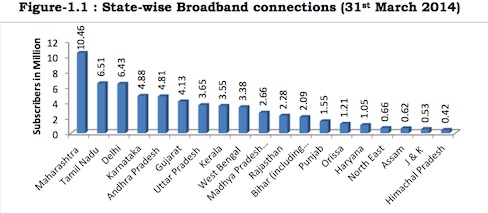
In a perfect world, you’d be able to enjoy every beer you drink in peace: sip it, love it, and swap it for another cold one once it’s gone. But it’s not that simple: These days, lots of guys like talking about beer almost as much as consuming it. Ever imbibe with a brewhead? It can be like watching a blockbuster action flick with a film critic: You just want to sit back and watch stuff blow up, but he can’t stop pointing out all the technical camera work.
So if your buddy’s an aspiring beer sommelier, you’ll need to keep pace without sounding dumb. Here are some beer basics to help you bluff your way through any suds-soaked conversation:
1. Don’t sound creepy.
You know how some people have strong aversions to certain words, like “moist” or “foodie”? “Mouthfeel” is the beer world’s version of those toxic terms. It’s gross. But many people are hell-bent on describing the way a beer happens to sit on their tongue, so at some point you’ll inevitably find yourself discussing the feeling your mouth gets when it’s full of suds.
If you insist, try these descriptors: A highly carbonated beer might be “lively” or “effervescent.” Gummy beers can be “thick,” “chewy,” or “viscous.” Flat beers are “flat.” Aim to avoid the fairly common “creamy,” because cream also has a flavor. (Go with “silky” or “smooth” instead.) Remember, you’re not talking about flavor yet, so just try to get this part of the conversation over with as quickly as possible.
2. Pick out your flavors.
Beer is made with grain, water, hops, and yeast. The most important beer grain is barley, though brewers across the quality spectrum will also toss in rye, oats, wheat, corn, rice, or anything else that can be soaked, dried, crushed, boiled, and fermented. It’s a whole big process, and the end result is the malt.
Malt contributes a beer’s backbone–the base flavors that hold everything together while the hops jump around doing their big, loud, bitter thing. Malt flavors are most commonly described as “bready,” “biscuity,” “grassy,” “fruity,” “caramel,” or “roasted.”
The chocolate and coffee flavors in stout come from roasting the malt. You’ll hear a lot about crystal malts; these are the ones that taste like caramel. The fruitiness can be a bit tricky, because hops will kick in some fruit, too. If your fruit tastes darker, like cherries or plums or raisins, you can safely chalk it up to the malt.
If your beer’s cheap and sweet, blame corn. (It can do good work, but quality brewers don’t use much of it anymore, so it rarely lives up to its potential). If it’s cloudy, it could be some wheat. Rye adds spice, but be careful: a lot of hops do that, too.
3. Understand hops.
Hops are the female flowers of the Humulus lupulus plant, which grows as a vine called, for some damn reason, a bine. They add aroma, flavor, and bitterness to beer. There are approximately one billion American hops–from Fuggle to Simcoe to Cascade to Centennial–and the number doubles every 24 hours.
Sounds daunting, right? Don’t sweat it. Hop varieties are like heirloom apple varieties: There are tons, and they are distinct, but they aren’t all that distinct. Unless you’re looking to get really serious about it, don’t bother trying to memorize which ones are grapefruity and which ones are piney. Just know that a beer with a lot of hops is likely to be described as having an aroma and/or flavor that evokes grapefruit, pine, herbs, flowers, citrus, and even the dankness often associated with, uh, prescription glaucoma medication.
Generally speaking, the more hops a brewer uses, the more bitter the beer. IBU stands for International Bittering Units–beers described as “hoppy” will have anywhere from 40 to more than 100 IBUs. This is an important measurement for the brewer to use in maintaining consistency from batch to batch, but its importance to the drinker is overrated. Try not to get sucked into an IBU discussion.
A beer that has been “dry-hopped” has had an extra dose of hops added toward the end of the brewing process. This greatly enhances the aroma; it’s a nice touch. “Wet-” or “fresh-hopped” means the hops weren’t dried before use. This happens around harvest time in the fall. You don’t want to talk about fresh hops.
4. Don’t forget about the yeast–but don’t dwell on it, either.
Yeast eats the sugar from the malt and turns it into alcohol. Hooray for yeast! It’s used primarily as a fermentation workhorse in most beers, imparting little flavor. Lagers and ales use different kinds of yeast that thrive at the categories’ respective fermentation temperatures. But Belgian and Belgian-style beers are heavily reliant on propriety yeast strains that lend notes of cloves, bananas, bubble gum, and pie-type spices to a beer.
5. Know your IPAs.
Though tensions have begun to ease, there’s still a bit of an East Coast/West Coast IPA feud. The basic distinction is that East Coast IPAs tend to have a stronger malt presence, whereas out west, brewers just let the hops run wild. The West Coast style, popularized by OGs like Stone, Lagunitas, and Green Flash, has largely prevailed, and these days, most American IPAs are decidedly hop-forward despite their land of origin.
When your buddy says an IPA has an “East Coast character,” he means it’s more balanced, in the British tradition; some of the higher-profile East Coast-style IPAs are Harpoon, Goose Island, and Victory HopDevil. These are all far hoppier than anything ever shipped aboard a British East India Company boat, but they lack the face-punching hop dominance of the prevailing West Coast–which is to say, American–style.
6. Let your eyes guide you, but don’t let them lie.
People who think yakking about beer enhances the experience tend to be the wasteful sort who opt to dirty a glass even if the beer came in a perfectly good bottle or can. This means your first impression is going to be a visual one. A beer’s physical appearance can offer great clues, as long as you remember to trust but verify. Not all dark beers taste roasted, not all orange-tinted beers are double IPAs, and not all straw-colored beers are Bud Light.
7. Don’t modify your nouns.
Let’s say you’re positive you sense citrus, and you’re damn near certain it’s grapefruit rather than orange. Cool: That’s a good, specific verdict that your nose and tongue are qualified to issue. No need to gussy up your grapefruit by deciding it’s Ruby Red. Not to say there isn’t a difference, just that most casual beer drinkers shouldn’t trust themselves to spot that difference.
In other words, forget pontificating about mandarin orange, or fresh-cut grass, or Virginia ham. No one really cares.
8. Don’t guess at facts.
This might be the most important rule to remember. Never be the guy who says, “Hot damn, there’s some fine Centennial up in here!” when the hop in question was in fact the very similar Cascade. When you make declarations about the process or the recipe, you’re going to come off as either a know-it-all, or the only thing worse: an idiot.
You don’t want to just say “Mmm, hoppy.” So flesh it out to “Man, got some serious citrus from the hops, huh?” Then stop there. Don’t try to guess if the citrus in question is the Meyer lemon flavor common to the Sterling hops grown in the third row in from the creek on the south side of Old Man Harvilla’s farm just outside of Walla Walla.
9. But let your opinions fly.
Think it tastes like nectarines? Then it does.
10. When in doubt, just drink up.
Despite the Internet’s biggest lie–that all humans are required to have opinions about all topics at all times–it’s still technically legal to sit out part or all of most conversations. This is particularly easy when you’re shooting the breeze about beer, because your counterparts are likely to be men, and we’re generally less concerned with the noises that come from other people’s beerholes than our own.
Remember your blowhard roommate who loved to shout out Jeopardy! answers in the easy categories but coincidentally always found his face full of Hot Pocket before a contestant was even halfway through saying “I’ll take Norwegian Opera for $1,800, Alex”? Whenever someone suggests there may have been an imprecise temperature elevation during diacetyl rest, just bend your elbow and keep chugging ’til the storm blows over.



























No Comments